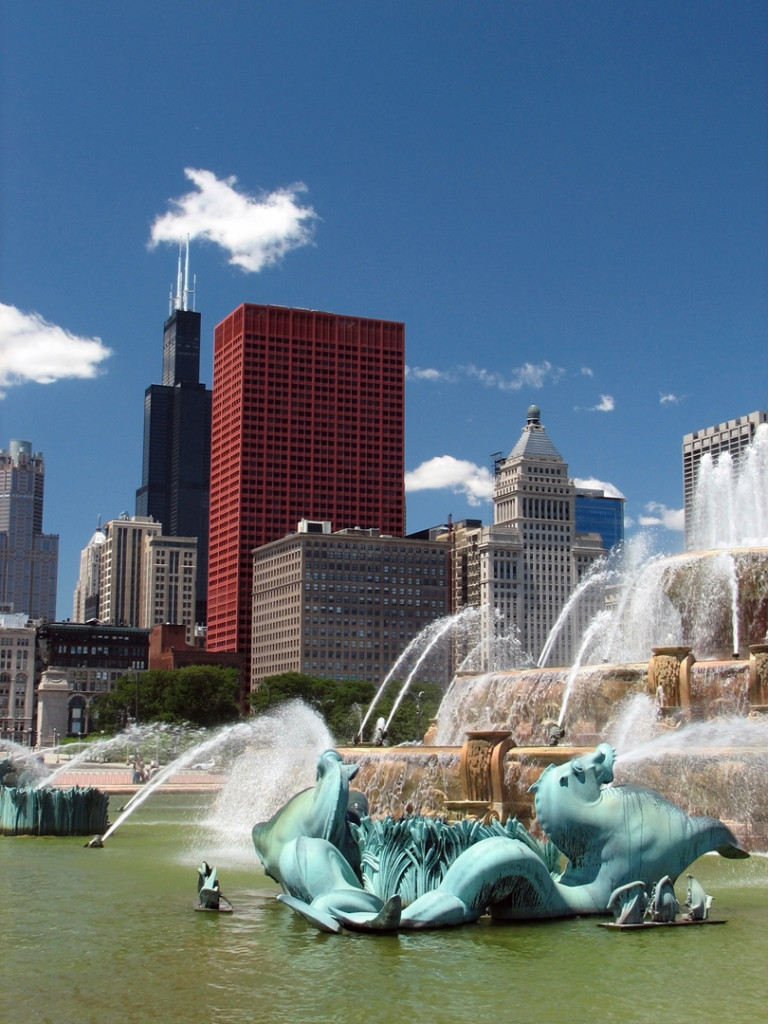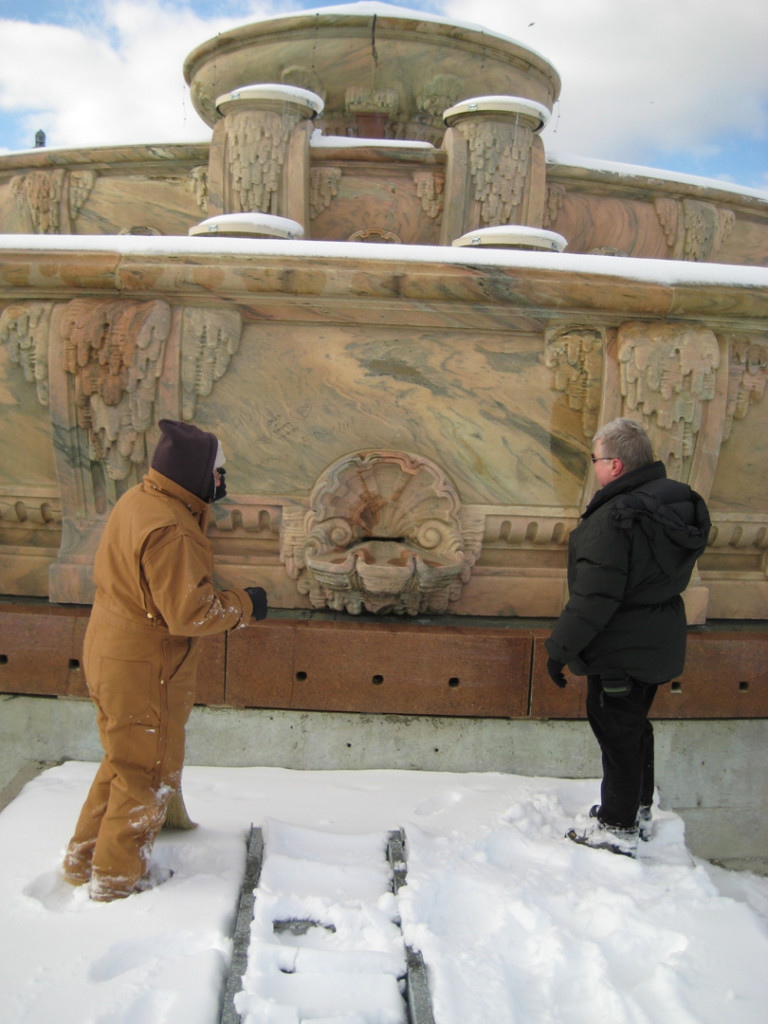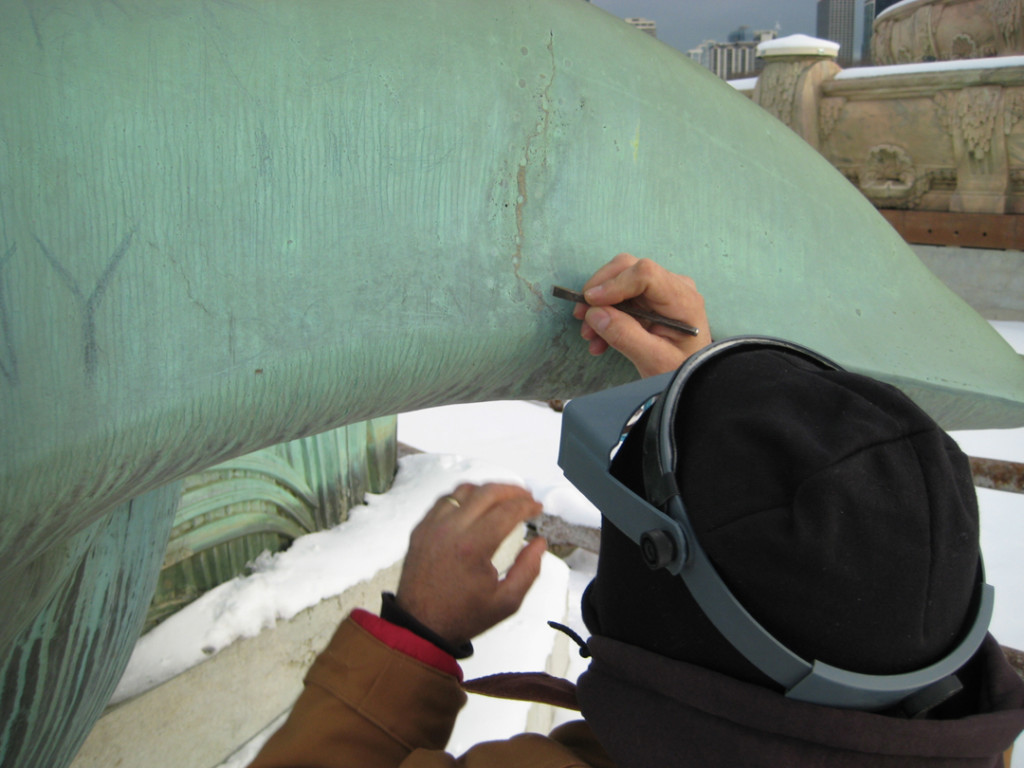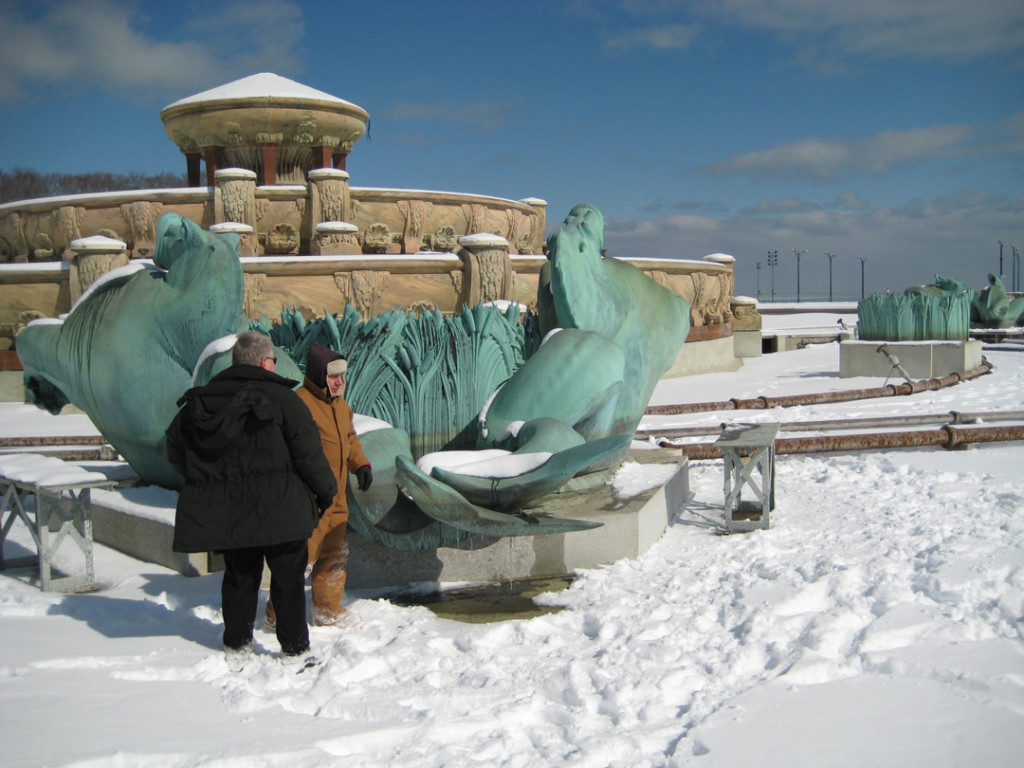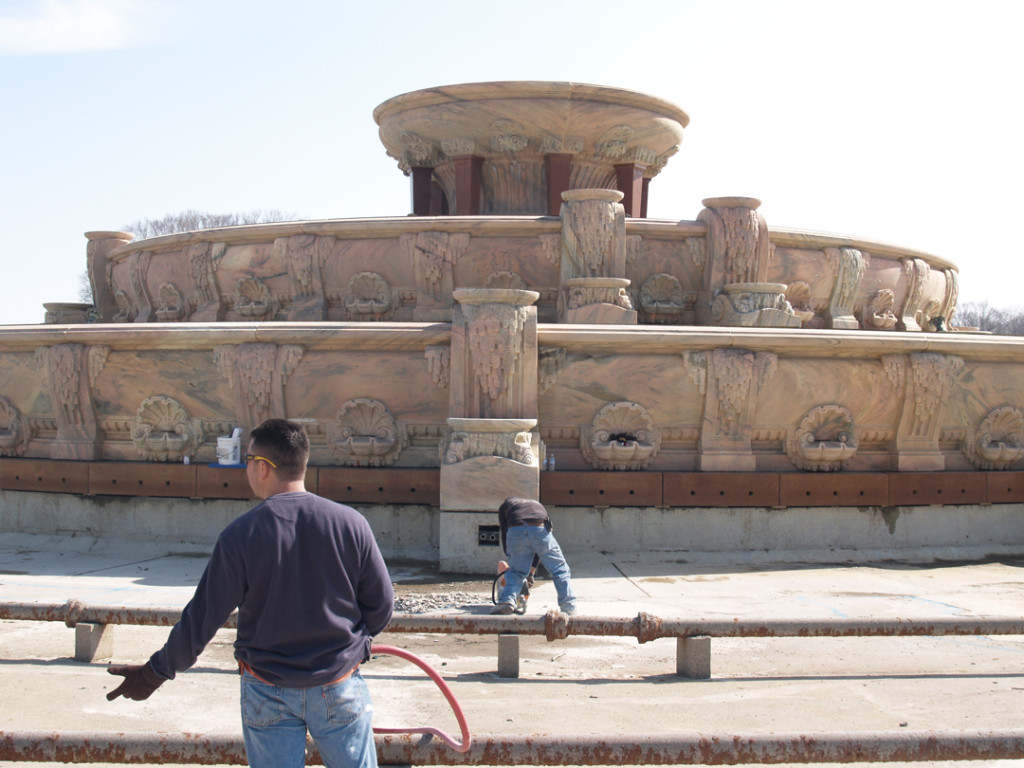McKay Lodge Art Conservation Laboratory, Inc. of Oberlin, Ohio, well known for their expertise in historic fountains, was selected as the project team’s bronze and stone conservator for the design, specifications, contract documents and administration of the upcoming major renovation of Chicago’s famous Buckingham Fountain, once the world’s largest fountain. The team of experts assembled by the landscape architecture firm Thompson Dyke & Associates of Chicago was awarded the highly coveted contract after a thorough and long review of expert teams by the Chicago Park Board.
Buckingham Fountain is located prominently in Chicago’s Grant Park and adjacent to Lake Shore Drive, which runs parallel to the shoreline of Lake Michigan. This 1.5 million gallon fountain serves as one of Chicago’s most notable landmarks. The fountain, designed by Edward H. Bennett, was based on the much smaller Latona Basin at Versailles and completed in 1927 as a dedication to the City of Chicago in memory of Clarence Buckingham. The Chicago Park District sought a multi-disciplinary team of professionals to undertake a comprehensive investigation of all fountain materials and systems, design for restoration and improvement of these materials and systems, and administration of the implementation of these improvements. A comprehensive renovation of the ailing fountain is expected to cost up to 25 million dollars and must be completed between shut-off in the fall of 2008 and start-up in the spring of 2009. Work will take place under the protection of an enormous tent during Chicago’s severe cold and wind.
To complete the Buckingham Fountain renovation design, McKay Lodge Art Conservation Laboratory, Inc. was charged with materials analyses of the bronze and marble and the design of procedures for their cleaning, repairs and preservation. The stability of the naturally formed green patina (copper corrosion products) was studied by optical microscopy and instrumental analyses. Current technology and materials were evaluated for protecting the weathered pink Georgia marble. Use of the fountain was evaluated in light of long term preservation. The company also oversaw the removal of the four pairs of monumental bronze “sea horses” and necessary disassembly of the marble structure. McKay Lodge Art Conservation, Inc. also participated in the work of other team members designing new water features, water systems and lighting insofar as these impact materials preservation.
OUR INFORMATION ON THE 1927 CLARENCE BUCKINGHAM MEMORIAL FOUNTAIN BRONZES
-
- The green bronzes are a distinctive feature of the Buckingham Fountain, etched in the memory of generations and preserved for the future in many thousands of photographs. And the color of the bronzes beautifully compliments the pink of the Georgia marble. We do not know for certain what was the first color (patina) of these bronze sculptures, sculpted by Maurice F. Loyau (1895-1936) of Boulogne, France and cast by the foundry of H. Rouard, Paris in 1926. Small models for the bronzes bear two colors, perhaps offering a choice to the client. The French at this time continued to lead the world in experimental colorations of bronze, including greens. But like our Statue of Liberty, a repousse fabricated in France (inaugurated in 1886), Liberty and most sculpture destined for outdoor display was sent from their makers with a brown patina. By 1926, foundrymen and sculptors knew well that bronze left unattended would turn green and green would have been the predominant color of outdoor bronze at that time, as bronzes exposed to the sulfur of industrial atmospheres began turning green around the mid 19th century. To prevent bronze from turning green applications of oils were common in the 19th century as protective coatings. But green was not wholly viewed with dislike. Connoisseurs and the knowing public were appreciative of the green patinas on ancient bronze sculpture and utilitarian artifacts and French patineurs labored to imitate this.
-
- The fountain with its green elements sits within an architectural environment punctuated with similar green colors.Architecture and items surrounding the fountain feature elements of green seemingly coordinating with the green sea horses in the fountain. Standing at the fountain and scanning the city environment, these green relationships appear intentional.
- The bronzes are covered with the most common, and the most stable, of naturally formed patinas.Naturally formed “patinas” on copper and bronze (an alloy of copper, tin and other metals) are actually made up of various forms of corrosion. Some of these corrosion products are very slow forming and even protective, making little or no noticeable difference in a hundred years while others are fast and invasive, consuming the metal noticeably in ten years or less. Some are considered attractive, some are definitely unattractive. The most common formation of corrosion on outdoor bronze consists, first, of a layer of a copper oxide (cuprite) then a subsequent layer of green formed by the interaction of the copper with sulfur in the atmosphere (copper sulfate or the mineral brochantite). The copper oxide layer forms first and is very stable and protective of the metal. But copper ions (+) from the bronze do slowly pass through this oxide layer and become available for continued interaction with the atmosphere and the formation of other forms of corrosion. However, the combined copper oxide and copper sulfate layers protect the bronze, greatly slowing any further loss of metal into corrosion products. However, the addition of clear protective coatings in common use on outdoor bronze nowadays can bring this slow depletion of metal to a complete stop. The above photograph of a cross section of corroded bronze shows a typical formation and represents what has formed on the bronze sea horses and other bronze elements of the fountain. We know from instrumental analysis that the various greens we see on the fountain are almost entirely green copper sulfates. The bronzes of the fountain are coated with the most common and most stable of naturally formed copper corrosion products. And these are also broadly considered to be the most attractive of natural green patinas.
- Very little bronze metal of the fountain bronzes has been consumed by wear or loss in the formation of their patinas. However, some loss of metal is apparent and is slowly continuing. In the photograph above there are vertical and horizontal lines visible in the bronze surface. These very fine lines of surface variations in the metal are the result of divisions in the packed sand molds used for casting the molten metal. Their preservation and visibility after over 80 years of exposure is testimony to how little metal has been lost to erosion or corrosion.
- Water is continually wearing away the patina on some areas of the bronzes and thus allowing faster depletion of the metal in the new formation of green corrosion. Rivulets of water wearing away the green corrosion have left streaks of slight depressions that cause the water now to continue to flow repeatedly along the very same pathways eroding the corrosion, and its new formations there, at an accelerated pace.
- The action of water appears to have been beneficial in preventing the formation of undesirable corrosion patinas or the accumulation of crusts of corrosion and dirt. The various greens of the patina on the fountain bronzes are quite uniform in color and relatively even in thickness. They do not display the heavy crusts and variegated colors of black and green with some yellow and white seen on many outdoor bronze castings. There are only the occasional groups of sparsely populated bits of dark crust. These are raised above the surrounding smooth green surfaces. They tend to be harder than the light green and may be almost permanent.

